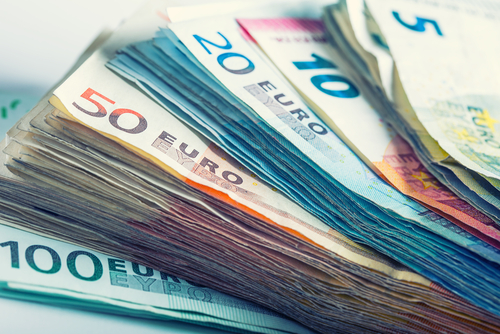Euro holds near eight-week lows ahead of Draghi news conference
LONDON – The euro held near eight-week lows on Thursday as traders prepared for European Central Bank President Mario Draghi to speak with investors searching for any signals about when the ECB will begin unwinding its stimulus.
The single currency trimmed earlier gains to trade flat at $1.2164 EUR= after the ECB kept rates unchanged as widely expected. The euro remains about 2-1/2 cents below highs touched only last week, after a bounce in U.S. Treasury yields fired up dollar-buying and encouraged some to question whether the euro’s rally since last year had run out of steam.
Attention now turns to Draghi’s news conference starting at 1230 GMT.
“We think the ECB is probably quite happy with its forward guidance. The euro having weakened probably makes the ECB relatively content with the way markets are priced at the moment,” said Adam Cole, chief currencies strategist at RBC.
After a strong rally into February, the euro has since been stuck in a trading range against a dollar, as investors lowered expectations of an ECB moving rapidly towards the end of its monetary stimulus program.
So far in 2018, the euro has trimmed gains to be up about 1.5 percent so far this year compared to more than 4 percent at the beginning of February.
Traders are also beginning to question whether the dollar is really at risk of a long structural decline – as posited by many – when the Federal Reserve will be raising rates faster than other major central banks.
Cole said euro/dollar was unlikely to budge much if the ECB says little about ending its bond-buying, but that the euro is at risk in the coming months if the market begins to price in more U.S. rate hikes.
“The overwhelming dollar bearish consensus we had at the start of the year has at least moderated,” he said, while adding that most forecasts still had the dollar falling in 2018.
In recent days the euro has sold off heavily and a drop below $1.2154, its March 1 low, would leave it at its weakest since mid-January and erasing most of its 2018 gains.
SWEDISH CROWN TUMBLES
Elsewhere, Sweden’s crown, one of the worst performing G10 currencies in 2018, fell to its lowest since late 2009 after its central bank postponed monetary tightening until the end of the year, citing weak inflation.
Most investors are bearish on the crown, believing the Riksbank will stick its ultra-dovish tone even as the ECB acts.
The crown fell as much as 0.6 percent to 10.485 EURSEK= crowns per euro before recovering slightly. It was also down half a percent against the dollar SEK=, its lowest since mid-2017.
The dollar held near a 3-1/2-month high against a basket of currencies .DXY, bolstered by the 10-year Treasury benchmark yield US10YT=RR breaching the three percent threshold for the first time in four years.
The rise in yields, driven by worries about the growing supply of U.S. government debt and inflationary pressures from increasing oil prices, has caused U.S.-Japan and U.S.-German yield differentials to widen further in the dollar’s favor, leaving the yen and the euro lower.
“As markets become less confident about the European growth outlook, at the same time as looking for the U.S. to benefit from late-cycle fiscal easing, I shouldn’t really be surprised if we reverse pretty much all of January’s euro/dollar spike,” said Kit Juckes, chief FX strategist at Societe Generale.
Against the yen, the dollar set a 2-1/2-month high of 109.49 yen but later eased to 109.305 yen JPY=, down 0.1 percent.
The dollar also fell marginally against the Australian AUD= and Canadian CAD= dollars after its recent gains.

